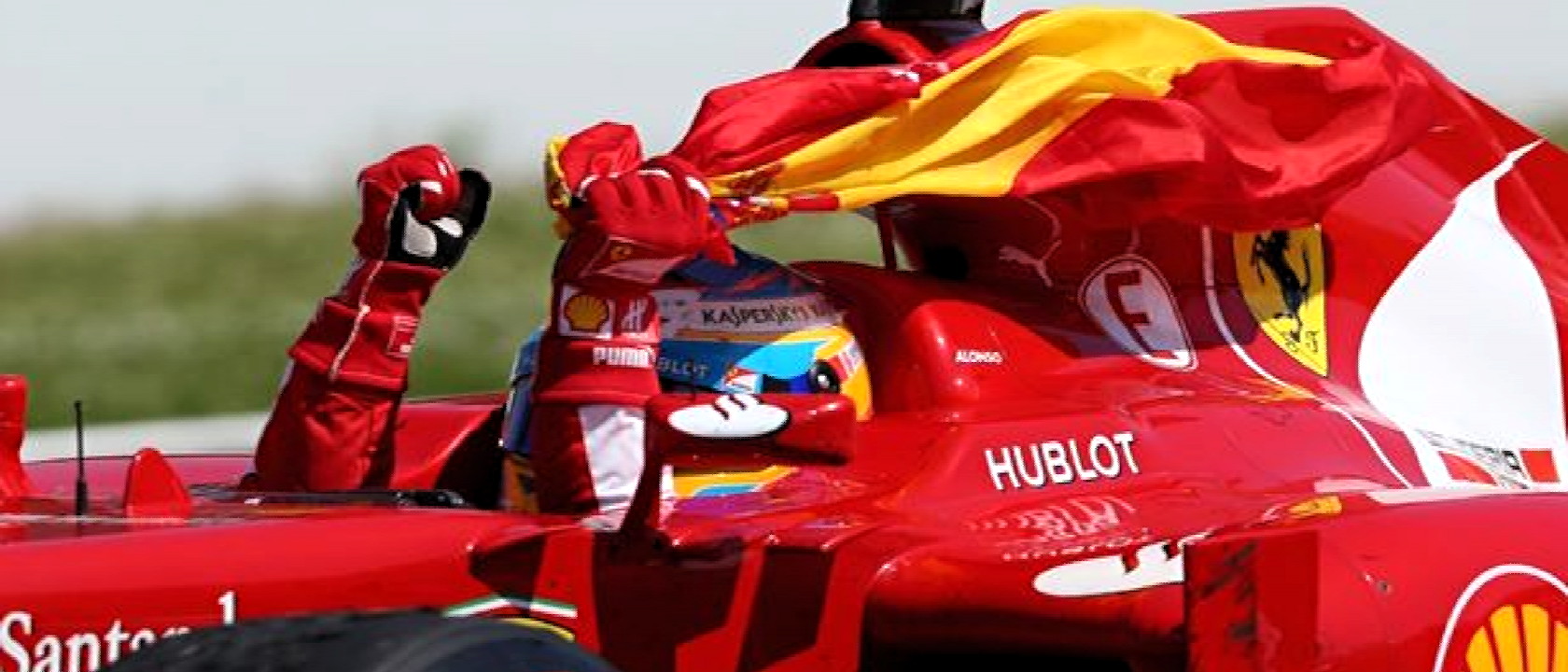


Renault RS26 2006
More than a decade has passed since Fernando Alonso last became F1 World Champion. The back-to-back titles of 2005-06 with Renault have been followed by many more wins, podiums and plaudits, yet the Spanish driver who many have considered Formula One’s most complete remains stuck one short of his career ambition.

Alonso is the man who ended Michael Schumacher’s Formula 1 reign, and by doing so became the then-youngest champion in F1 history. Confirmation of his brilliance came in 2006; with Schumacher retiring, that 2nd consecutive crown made it seem certain Alonso would replace him as the sport’s dominant superstar. But it was not to be. A fractious first move to McLaren, and subsequent spells with Renault and Ferrari, yielded success in the form of 17 victories and three runner-up finishes — but not the one piece of silverware Fernando really desires. Perhaps ironically, it has been in inferior machinery that Alonso has come up with some of his greatest drives, as in his dazzling victories for the Scuderia at Monza in 2010, at home in Valencia and in the Malaysian GP in 2012, and in Spain and China during the 2013 season.
After a rookie year with backmarker Minardi, Alonso was signed by Renault as a test driver for 2002. The next year, at age 22, Fernando made F1 history by becoming the youngest-ever pole sitter in Malaysia and then the youngest Grand Prix winner with a maiden victory in Hungary. Alonso’s nearly flawless 2005 performance — his only serious error came in Canada where he crashed while leading — was highlighted by a symbolic defeat of Schumacher at Imola, where he brilliantly fended off the best efforts of the seven-time champion. For 2007 he moved to McLaren, giving Alonso the chance to become the first driver since Juan Manuel Fangio to score successive championships with different teams. But while the car was quick, so was teammate Lewis Hamilton, and an intense rivalry saw the pair finish even, beaten to the title by a single point by the “Ice Man,” Ferrari’s Kimi Räikkönen.
On the biggest weekend in motorsport, I will be in Indianapolis. Racing at the Brickyard. Because I need to be. The Indy 500 is one of the greatest events in the sport. I belong there. I love to race; like really, really race.
— Fernando Alonso (2017) —
It was a disappointing end to a frustrating year for Alonso, whose relationship with McLaren grew increasingly strained. Moving to Ferrari in 2010, an epic 2012 season saw Alonso came within three points of winning the driving title, an achievement that ultimately went to Sebastian Vettel. But Alonso distinguished himself in what he called “my best ever season” by consistently flogging his far from fastest Ferrari for all it was worth. His challenge was the product of a fighting spirit, clever racecraft and mistake-free driving that thrilled fans and astounded critics. Alonso’s 2013 campaign was equally impressive, when he was 2nd overall in a year of even greater domination by Vettel. Flattering a Ferrari that was a beast, at best, Alonso won twice, was second five times, consistently collected high points and failed to score in only two races.
In 2014 his car’s serious limitations left the proud Spaniard winless. Alonso decided enough was enough and negotiated an early termination of his contract, opening the door for a switch back to McLaren — a reunion previously considered unthinkable. But despite Woking’s return to Honda power, the marriage has not borne fruit to date, as Alonso has struggled in mid-pack or worse throughout the post-2014 hybrid era. Yet the talent is still there, aptly illustrated by an exceptional visit to the Indy 500 in 2017. There, oval rookie Alonso nearly took pole, led the race for a substantial period and impressed all with driving intelligence and speed until a (characteristic) Honda engine failure ended his spectacular debut.
The statistics may appoint Hamilton and Vettel — Alonso at one time held records as youngest pole-sitter, race winner, hat-trick (pole, win, fastest lap), World Champion and double-World Champion, all accolades subsequently claimed by the German — as the undisputed kings of the post-Schumacher era. Alonso’s near misses in the championship (two points in 2007, five point in 2010 and four in 2012) offer a different perspective. Indeed, it is Alonso’s sense of indefatigable compeitition and ability to extract the absolute maximum from almost any on-track scenario, however, which have equally defined the past decade. Perhaps appropriately, Autosport’s Nigel Roebuck proclaimed Alonso the “greatest Formula 1 driver of the 21st century.”
| Fernando Alonso’s Career Profile | ||||||
| Seasons | Races | Wins | Poles | Fastest Laps | Points | F1 Titles |
| 17 | 291 | 32 | 22 | 23 | 1,871 | 2 |
Other Fernando Alonso Sites
Formula1.com Hall of Fame
Wikipedia Article
Biography by Dennis David
GP Encyclopedia
AutoSport—F1’s Greatest Drivers
ESPN F1 Profile
Official Alonso site
Fernando Alonso Video
Battling Schumacher |
The Unfinished Story |
Indy 2017 Highlights |


